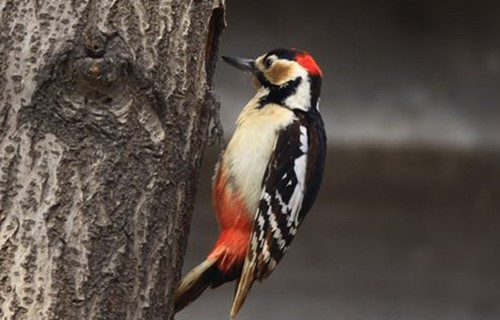啄木鸟啄木的嘟嘟声,在我们常人看来没什么,大自然的声音吗,然而在科学家眼里,这种声音却可以用来识别身份。

Humans can recognize each other by voice alone. I sound different from other 60-Second Science reporters, for example. In fact, lots of nonhuman animals, of all types, use voices to distinguish familiar individuals…including frogs, fish, lemurs, and penguins.
研究人员从生活在波兰森林中的41只大斑啄木鸟(彩红色,白色和黑色的鸟类)身上记录了多种啄木声。 随后他们使用音频软件对他们进行了分析。
And that unique audio fingerprint extends to a sound you may have heard in the forest on occasion: ...the drumming of a woodpecker.
那个独特的音频指纹会延伸到偶尔在森林里听到的声音:那就是啄木鸟的啄木声。
Researchers recorded multiple drum rolls, from 41 great spotted woodpeckers—colorful red, white and black birds—living in Polish forests. They then used audio software to analyze them.
研究人员从生活在波兰森林中的41只大斑啄木鸟(多彩的红色,白色和黑色的鸟类)身上记录了多种啄木声。 随后他们使用音频软件对他们进行了分析。
And they found that the length of the drumrolls, and the spacing between beats varied enough from bird to bird to tell the woodpeckers apart by drumming alone. The study is in the journal PLOS ONE
发现单单通过嘟嘟声,啄木声的长度,以及敲击树木间隔的特异之处可以辨别不同的啄木鸟。该研究刊登在PLOS ONE科学期刊上。
The scientists say this fact might be useful to woodpeckers, in identifying each other. And to conservation biologists, trying to tease one bird from another in a recording, for example, to count individuals in a given area. The birds’ head-banging could thus do away with that research headache.
科学家们说这样可能对啄木鸟识别彼此是有用的。 对于保护生物学家来说,可以通过捉弄一只鸟与另一只鸟的方式做些记录,例如计算特定地区的个体。 这样,通过利用啄木鸟的头部撞击声做分析就可以消除这种令人头疼的研究。







